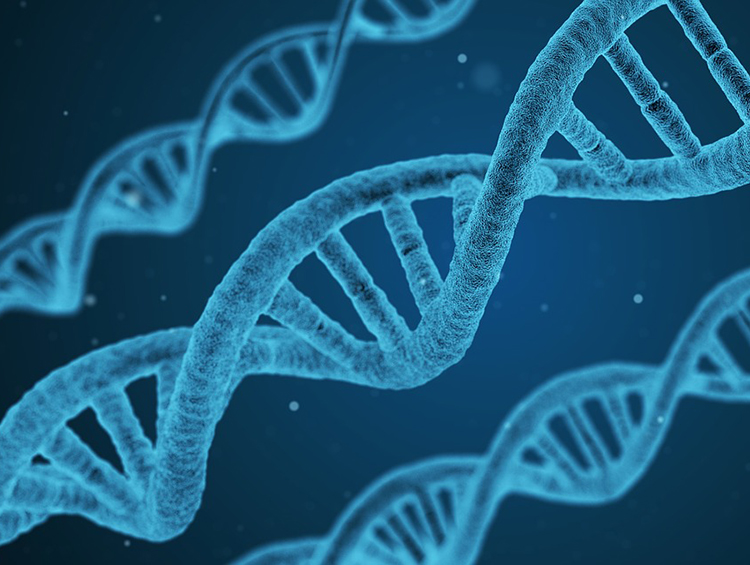
- Criotransferencia, Embriodonación, FIV, Ovodonación
Autora: Sylvia Fernández Shaw
 Español (Spanish)
Español (Spanish) Français (French)
Français (French) English
EnglishArtificial insemination with donor sperm (AI-D) consists in controlling or stimulating the ovulation and placing the donor sperm, inside the uterus, the day of ovulation.
Artificial insemination with donor sperm is indicated in:
1. Women with no male partner.
2. Serious or/and irreversible alteration in the partner’s sperm
3. Risk of transmission of genetic or infectious disease
1. Ovarian stimulation: For this treatment it is not essential to stimulate the ovaries if the woman is young and has a normal fertility study and regular cycles. In case of ovarian stimulation, injectable hormonal preparations are used from the 3rd day of the cycle. Two to 4 transvaginal ultrasounds are carried out throughout a week (from day 8 of the cycle) to control the ovarian response to the stimulation. When 1 to 3 good sized follicles are viewed by ultrasound, medication (HCG) is administered to induce ovulation.
2. The intrauterine insemination is performed between day 10 and 18 of the cycle. The day of the insemination, the semen sample from the donor is thawed and prepared for insemination. The insemination consists of inserting, through the cervix, a thin cannula loaded with the donor sperm. This procedure is not painful, lasts a few minutes and it can be carried out in the consultation room. After the insemination the patient rests for 10 minutes.
3. The pregnancy test is carried out in blood approximately 15 days after insemination and the results are available in a few hours.
During the month of treatment the patient can lead a normal life. Pregnancy rate per cycle (or month of treatment) is 25%, and after 3 cycles 60%. Incidence of twin pregnancy: 15 – 20 %. Between 3 and 6 cycles of treatment are recommended. Click here to see our latests results with this treatment. You can find information on the cost of the treatment in URH García del Real in Conceive Plan Prices. The sperm Bank studies every donor to make sure they do not carry any genetic or infectious diseases which could be transmitted. On top of that, these donors are submitted to control tests 6 months later. Only then, the semen samples which were stored can be used. Donors are chosen depending on height, constitution, eye, skin and hair colour and blood group. URH García del Real works with a Spanish and other European Semen Banks for greater availability of differents phenotypes.
During the month of treatment the patient can lead a normal life. Pregnancy rate per cycle (or month of treatment) is 25%, and after 3 cycles 60%. Incidence of twin pregnancy: 15 – 20 %. Between 3 and 6 cycles of treatment are recommended. Click here to see our latests results with this treatment. You can find information on the cost of the treatment in URH García del Real in Conceive Plan Prices. The sperm Bank studies every donor to make sure they do not carry any genetic or infectious diseases which could be transmitted. On top of that, these donors are submitted to control tests 6 months later. Only then, the semen samples which were stored can be used. Donors are chosen depending on height, constitution, eye, skin and hair colour and blood group. URH García del Real works with a Spanish and other European Semen Banks for greater availability of differents phenotypes.
Artificial insemination with a sperm donor is indicated in the following cases:
– Women with a female partner
– Women who want to be mothers without a partner
– In the case of couples where the male present any of the following pathologies:
Secretory azoospemia. Absence of spermatozoa in the ejaculate because the testicles are not capable of producing spermatozoa.
Inherited diseases that can be transmitted to children and where In Vitro Fertilization with preimplantation genetic diagnosis cannot or is not desired.
HIV positive and does not want seminal washing.
Before starting an artificial insemination process, the woman receives a complete fertility diagnosis in order to confirm that the patient meets the essential requirements to become pregnant and that her pregnancy evolves correctly:
Gynecological examination (cytology and breast examination).
Oocyte reserve study that predicts good ovarian function or an adequate response to medication, in case it is necessary to stimulate the ovaries in the artificial insemination process.
Tubal patency, in at least one of the fallopian tubes. That is to say, that the fallopian tubes work correctly to allow the passage of the spermatozoa to achieve the fertilization of the egg and later, lead the embryo to the uterus where it will stay to continue its development.
Semen donation is regulated by the Spanish assisted reproduction law, approved on May 26, 2006 in the Congress of Deputies, where very clear rules are established to be a semen donor:
– Be between 18 and 50 years old.
– Be in good mental and physical health.
– Have good semen quality according to WHO criteria.
– Not suffer from any genetic or sexual transmission.
– Not having generated more than 6 descendants or more, interchangeably by assisted reproduction or natural methods.
In order to confirm these requirements, sperm banks carry out a personal interview with the donor and exhaustive clinical examinations to determine possible anomalies.
This selection process usually has several phases :
First phase
– Personal interview and completion of questionnaires on diseases, family history and personal habits.
– Study of their phenotypic characteristics. Physical data such as height, weight, skin color, eyes and hair, among others, will be collected.
– Seminal quality study or seminogram. The concentration of spermatozoa per cubic centimeter is checked, as well as the mobility and morphology of the spermatozoon. In order to carry out this study, the donor must respect a sexual abstinence of between 3 to 5 days, to ensure the quality of the sperm.
If the results of these tests pass the standards established by the sperm bank, continue with the process.
Second Phase
Blood analysis to perform a genetic study and rule out infectious diseases:
– Blood group
– Rh factor
– Syphilis test
– Hepatitis screening
– HIV markers
– Study for the detection of toxoplasma, rubella, herpes and cytomegalovirus infections.
– Determination in semen and blood of the presence of other sexually transmitted diseases.
– Genetic study of chromosomes or Karyotype study
Donation requirements are strict and many donors are rejected, around 50% Rejection is usually caused by semen quality rather than by diseases or genetic problems.
Third Phase
After being validated by the sperm bank, donors proceed to deposit their seminal donation . The normal thing is to make a weekly donation for 6 months, a total of 24 donations. Each of the samples are processed according to a freezing protocol and stored in liquid nitrogen containers for at least 6 months, during which time the infectious tests will be repeated. After this period, the donor's semen samples can be used.
The Spanish assisted reproduction law determines that the donation is completely anonymous, so that the donor cannot know the person receiving their sample and vice versa.
It is the assisted reproduction clinic itself that selects the donor, based on compatibility with the recipients. In the first place, it is taken into account that the blood group is compatible and then an attempt is made to adapt the donor's profile to the physical characteristics of the recipient or recipients.
Therefore, the privacy of both the donor and the donor is guaranteed by law and the recipient of the donation to carry out artificial insemination with a donor.
The insemination process has three main phases.
Phase 1: Control and/or ovarian stimulation
Artificial insemination with a sperm donor can be performed in two ways:
– In a spontaneous or natural cycle: After confirming that The patient's ovarian function is normal, and when there is no history of previous infertility, ovulation can be controlled by ultrasound from the 9th or 10th day of the cycle.
– In a cycle with ovarian stimulation: If the ovarian function ovarian insemination is not correct, there is a history of previous sterility, or the woman is older than 38 years, it is common to perform artificial insemination after a process of ovarian stimulation. Follicle-stimulating hormone (FSH) is administered from the third day of the cycle and the development of the follicles is controlled by ultrasound from the 8-9th day of the cycle.
Whether with or without ovarian stimulation, it is necessary to perform usually 1 to 3 ultrasounds over a week to determine the day on which the size and number of follicles is adequate to cause ovulation. Ovulation is caused by administering HCG, which is a hormone that mimics LH or luteostimulating hormone, which is what naturally causes ovulation and releases the egg into the fallopian tube.
Phase 2: Preparation semen sample
The semen sample most compatible with the recipient is selected, considering the blood group and physical characteristics, and is prepared in the laboratory.
Phase 3: Insemination
After determining the optimal day and time for the patient to ovulate, she is scheduled to proceed with artificial insemination with a donor. The sperm sample is loaded into a fine cannula and inserted into the uterus.
This is a very simple process, completely painless and very similar to any gynecological examination. It is not necessary to rest after insemination and daily activity can be resumed without problem.
Statistics reveal that the possibility of multiple pregnancy in an artificial insemination treatment with a donor can reach up to 20%.
In any case, assisted reproduction clinics are very careful in this regard, putting all possible means to make the pregnancy unique. During the ovarian stimulation that the patient receives, a rigorous control is carried out on the number of follicles, and therefore ovules, that the patient generates. In the event that the patient develops more than 3 follicles, it is common to cancel the cycle and try the next one, rather than assume the high risk of multiple pregnancy.
The pregnancy rate per cycle or month of treatment depends on the age of the patient and is around 25-30% in women under 35 years of age and 15-20% in women over that age.
It is recommended between 3 to 6 cycles of artificial insemination with a donor, reaching a probability of success close to 60%.
When there has been no pregnancy after artificial insemination, although the lack of success cannot be attributed to the semen sample, it is usual to try again with a different donor.
In principle there are no apparent risks directly associated with an artificial insemination process with a sperm donor, but it should be taken into account that some consequences have been observed in certain patients.
Ovarian hyperstimulation syndrome, in less than 1% of cases. The patients in which it arises are usually under 30 years of age or have polycystic ovaries.
Ectopic pregnancy, in 1-2% of cases. The pregnancy develops outside the uterus, specifically in the fallopian tubes.
Psychological disorders. If treatment is repeatedly unsatisfactory, anxiety and depressive symptoms may occur, for which it is advisable to seek psychological support.


Camino de la Zarzuela, 19 28023 (Aravaca) Madrid.
+34 91 740 16 90
secretaria@urh.es
Monday to thursday
8:00h a 14:00h 15:00h a 19:00h
Friday
8:00h a 14:00h



Demande un rendez-vous.
PIDE CITA
Envíanos este formulario con tus preferencias para la cita (fechas y franja horaria) y te llamaremos por teléfono para concertarla. En caso de que quieras que te contactemos por e-mail indícanoslo en los comentarios. Muchas gracias.